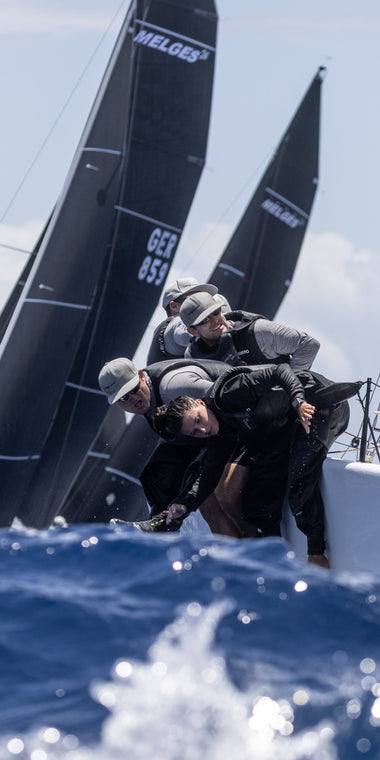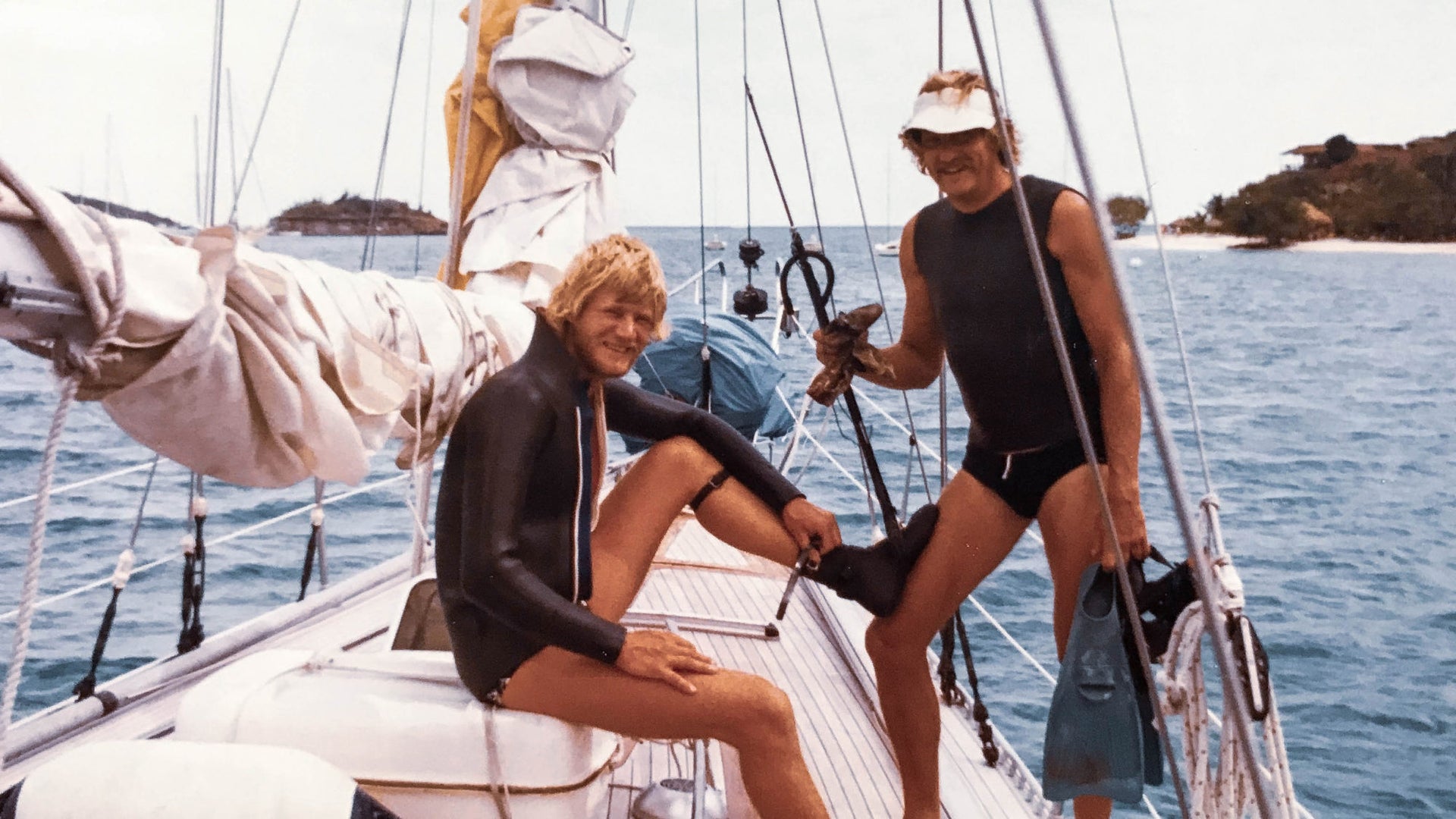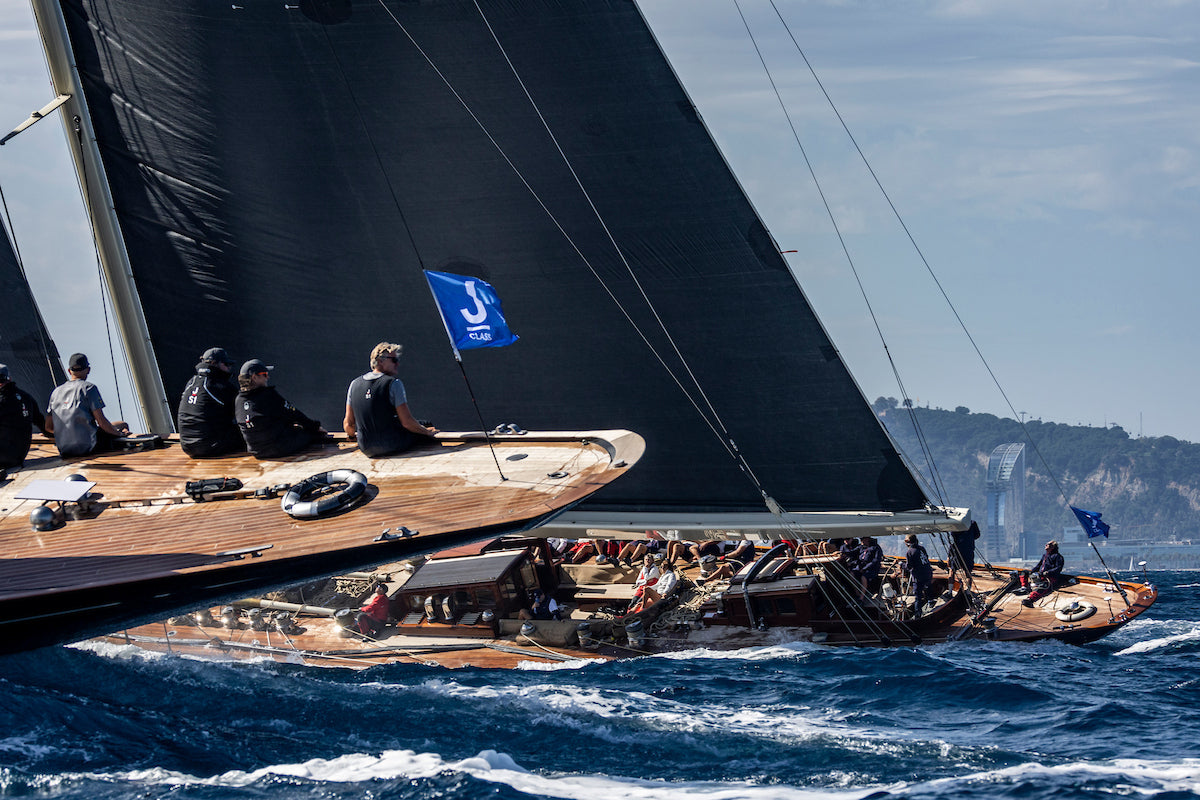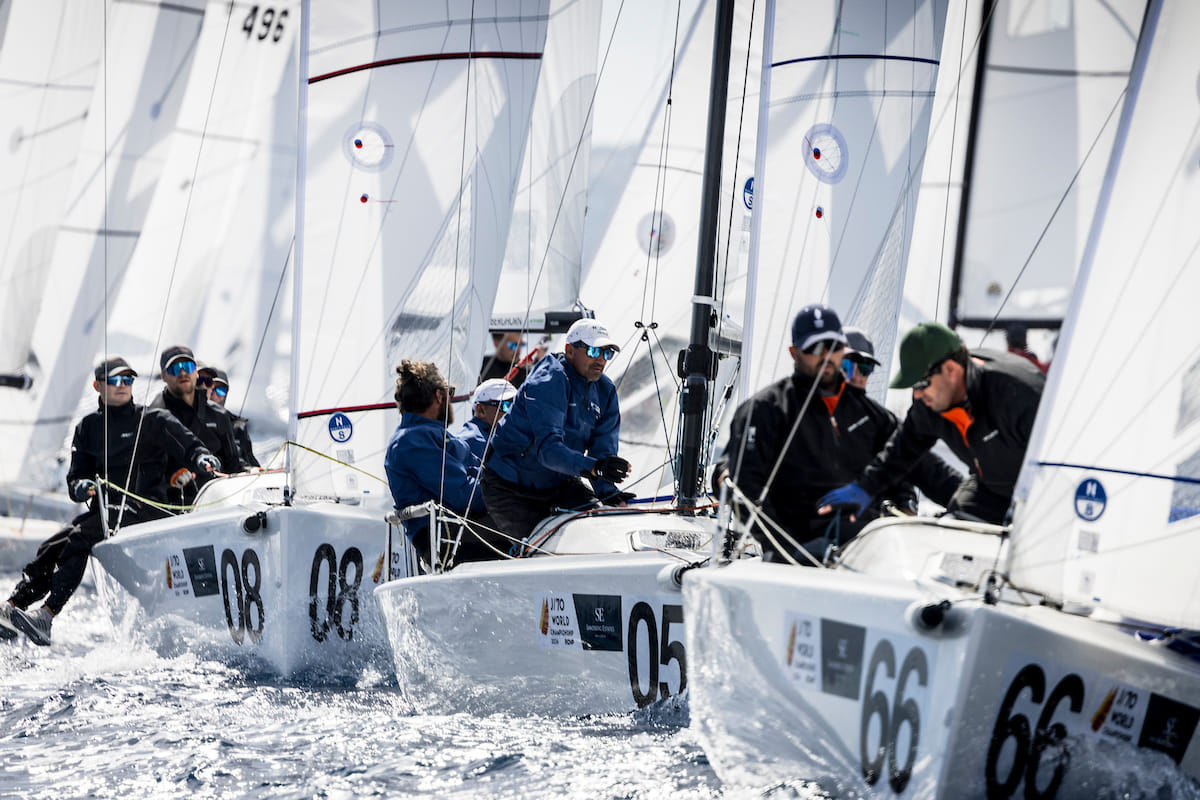THE STORY OF ARGO: PART I
THE STORY OF ARGO: PART I
An Opal 46, Has Been Shared by Three Generations of the Ravelius Family

After years of sailing with his father on board his beloved schooner, Argo, based in Sweden, John Ingvar Ravelius has taken part ownership of the boat, alongside his brother and his father and has been updating and refitting her with the dream to create memories with his young daughter and pass the tradition along. Ravelius shares the first chapter of his several part series, about how a sailboat, and the work that goes along with it, is bringing three generations together.
In 1974, my father, Ingvar Ravelius was a young 24-year-old walking around the Stockholm boat expo with his father, in Sweden, dreaming of sailing around the world on a boat of his own.
Ingvar had plenty of experience on smaller sailboats, but his dream was sailing around the world and he wanted something bigger and more reliable. As the pair wandered through the expo, they bumped into a friend, who knew of a boat being built by a local, revered boat builder called an Opal 46. This hull would be the first of only six ever built.
A couple of weeks later, Ingvar contacted the designer of the Opal 46 and visited the marina where this boat was being built with his father.
After seeing the work underway, it didn’t take much time for my father to decide that this is THE boat he wanted to sail around the world on, pick up his wallet and make a down payment to rent the molds for the hull, despite his father’s protest. He didn’t think that 24-year-old Ingvar was going to be able to build such a boat without any experience.

My father answered, “this is the boat that I want, I don’t know how to build it yet, but I am going to find out.”
The building of Argo began, Ingvar took on the messy and time-consuming work of hand fiberglassing the hull. Adding layer after layer, thinking that when he is on the ocean, the boat should be able to withstand heavy impacts without breaking. He made the thickest part of the hull 12 centimeters thick.
After the fiberglass set, he continued the work on the build outside his house in Sollentuna. My father’s neighbors did not know that they were going to live next to this build for the next six years.
Often, Ingvar would leave his home building site, and visit the marina where the first Opal 46 was being built, he asked them how they did things and took measurements, wrote them down on a notepad and went home and did the same thing the professional boatbuilders were doing.
A couple of years into the build, my father and the owner of the first Opal 46, which was christened and seaworthy, became good friends and invited him to sail across the Atlantic Ocean to the Caribbean.
In 1980 Ingvar took a break from building Argo to do a transatlantic crossing on his boat’s twin. On this trip, he learned a lot about how the Opal 46 handled the sea but also discovered how he could improve things on Argo.

One of the things that he changed from the original was the dining table in the saloon, they had trouble using this table while sailing, so the table in Argo was built to balance so that it is always horizontal when the boat is heeled.
One and a half years later, in 1982 Ingvar returned from adventures sailing and launched Argo for the very first time.
Seven long years after he hatched the idea at the expo, Ingvar’s dream was a reality. His friends and family came with him on the first test drive and everybody was celebrating. On Argo’s first voyage, they almost crashed, because of a backward connection on the hydraulic steering system, but she was sturdy, sound, and ready for adventure.
Later the same year, Argo and her crew participated in the famous race around the island Gotland named “Gotland runt” and a Swedish sailing magazine took a picture of Argo during the race, my father was very proud that they used the picture of his work the same year he was finished.

Ingvar is a very special man, and now that Argo is my project too, I want the details to be perfect. My father and I began refitting and converting Argo to sloop together in the past few years, giving her new North Sails and new life. Many times, when I was a child he showed me a special metal file and said; “I built Argo with this metal file”. When I was younger, I didn’t believe him, but today after I have worked a lot with him refitting Argo, I understand that he really did. He built Argo with his hands and a metal file, He put in every screw with a screwdriver, and Argo has thousands of screws. All the teak on Argo, both the deck and the interior is made from raw planks sawed outside his house in the suburbs of Stockholm.
Stay tuned for the next installment of Argo’s story, where Ravelius shares more stories from cruising with his parents aboard Argo, and how they sailed around the Mediterranean with a 1-year-old child.



























